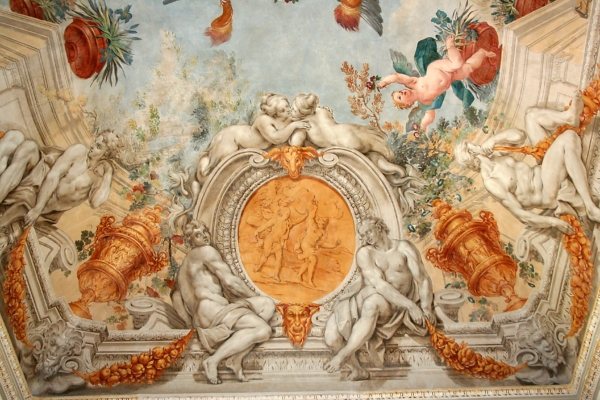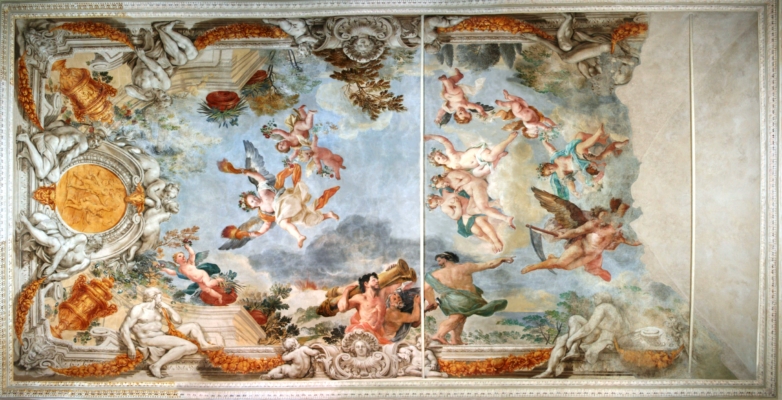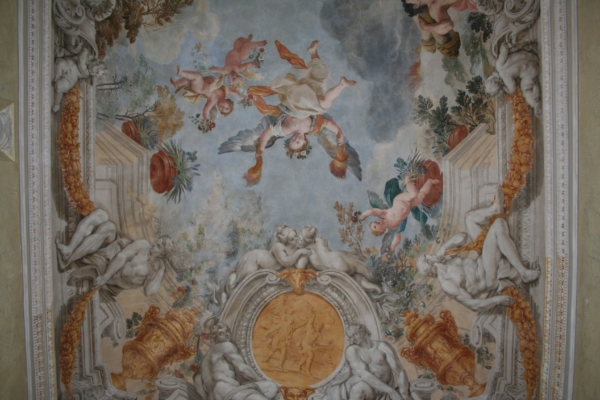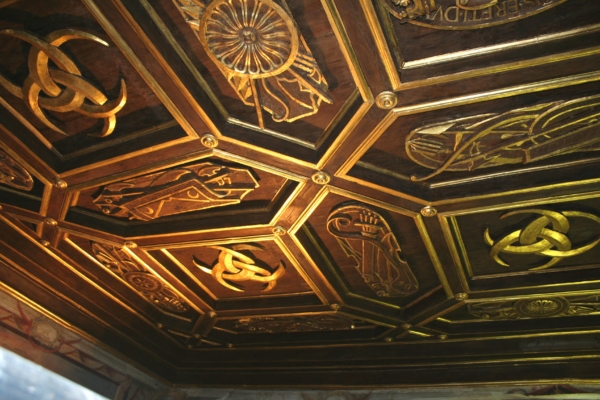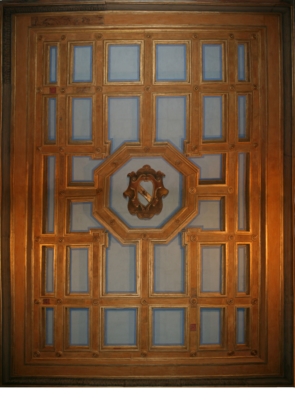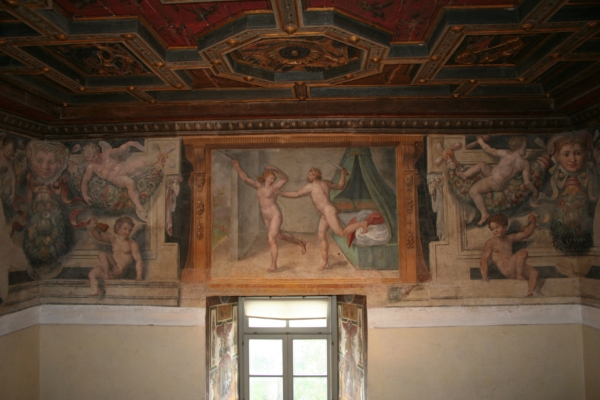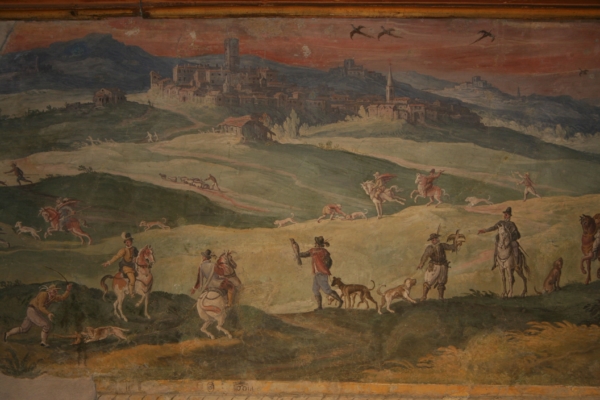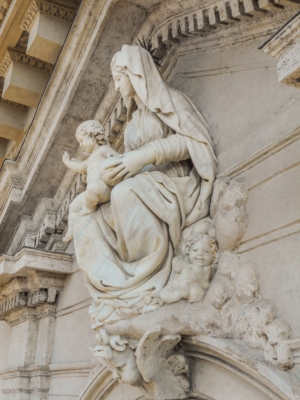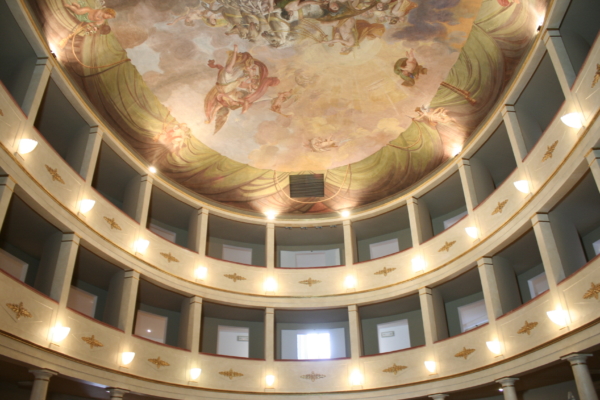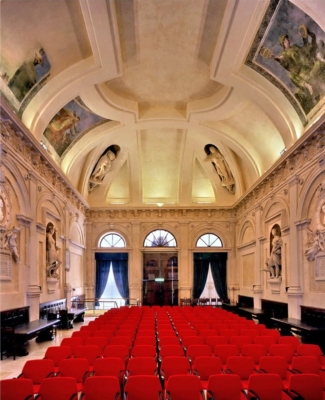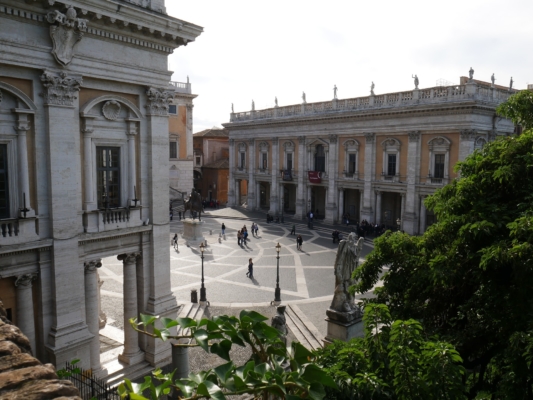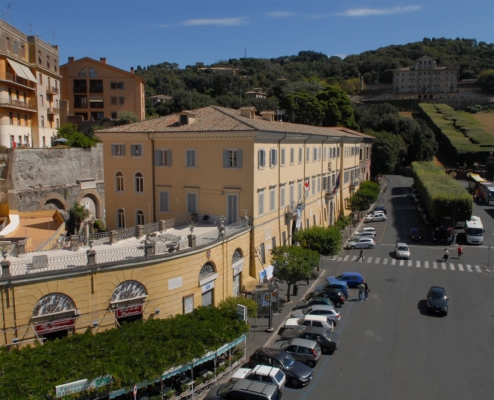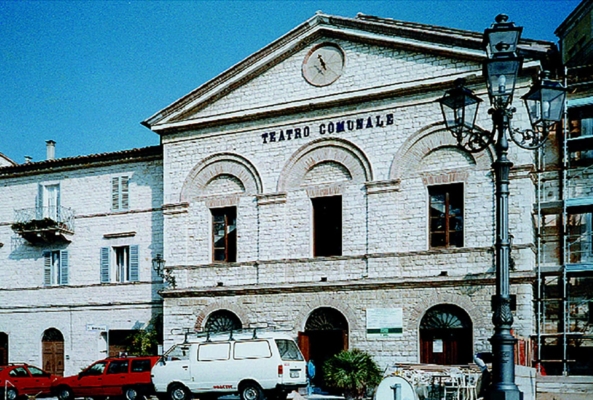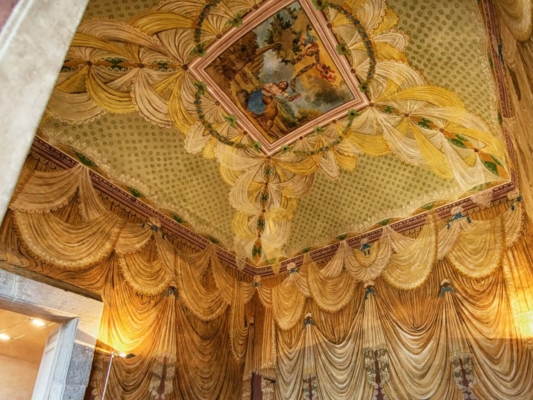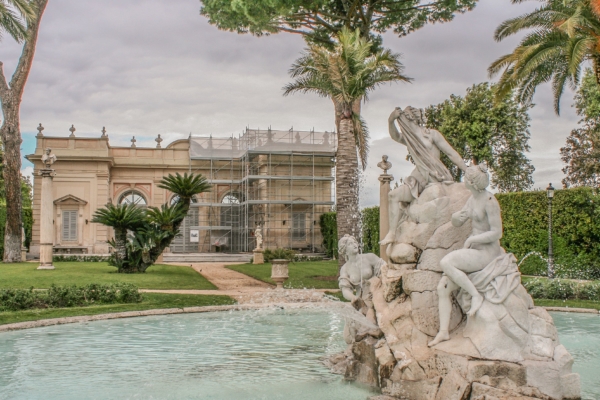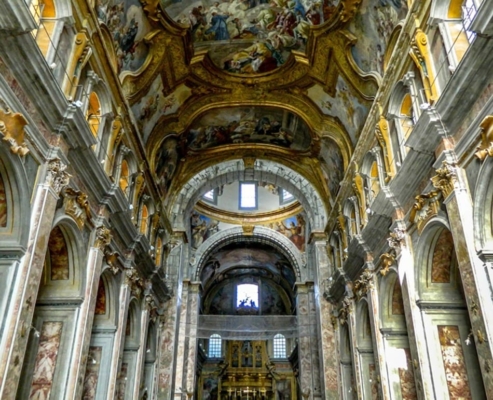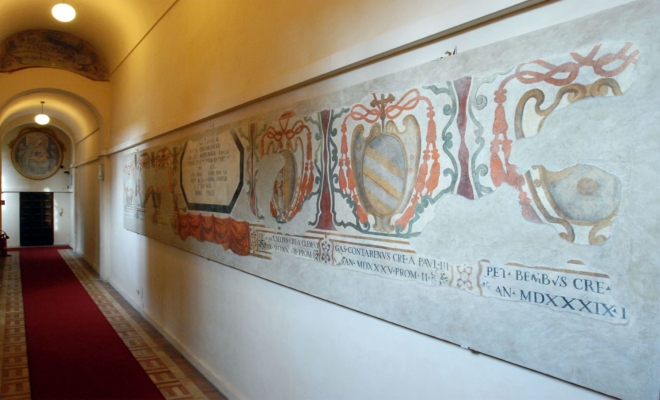Palazzo Orsini-Barberini of Monterotondo (RM) – Artistic restoration works of the frescoed rooms and of the carved decorated wooden ceilings
Brief historical notes. Around 1400 the Orsini undertook the first transformation of the Palace which would become the seat of their residence. As various documents from the family’s archive attest, in the middle of the century Pius II was hosted there, and from the beginning two distinct residences were structured in the fortress for the two branches of the Orsini family. The palace assumes considerable importance when Clarice Orsini, belonging to the branch descended from Giacomo Orsini, married Lorenzo de Medici in 1469. In 1500, the village of Monterotondo with its fortress were inherited by Franciotto Orsini who modified and enlarged the structure trasforming it from fortress to noble residence, completing the lower floors and the royal staircase that led to the noble apartments of Leone X, cousin of Franciotto Orsini. The works continued at the beginning of the seventeenth century, when the fiefdom became the property of the Barberinis in 1626. The Barberinis carried out an important further expansion of the building in order to make it more functional. All the Orsini’s inscriptions are covered and replaced with those of the Barberinis. In particular, in the rooms with the frescoes by Siciolante and Bril, the task of superimposing the Barberinis’ coats of arms over those of the Orsini was entrusted to Simone Lagi in 1628. Monterotondo, in 1727, was sold to the marquises Grillo from Genoa, under whom the Palazzo underwent only a few improvements. In 1814, the property passed to the Boncompagni family, who made it their country residence. In 1890 the municipal administration of Monterotondo bought the property by allocating the rooms to school rooms first and then to municipal offices.
Interview:

